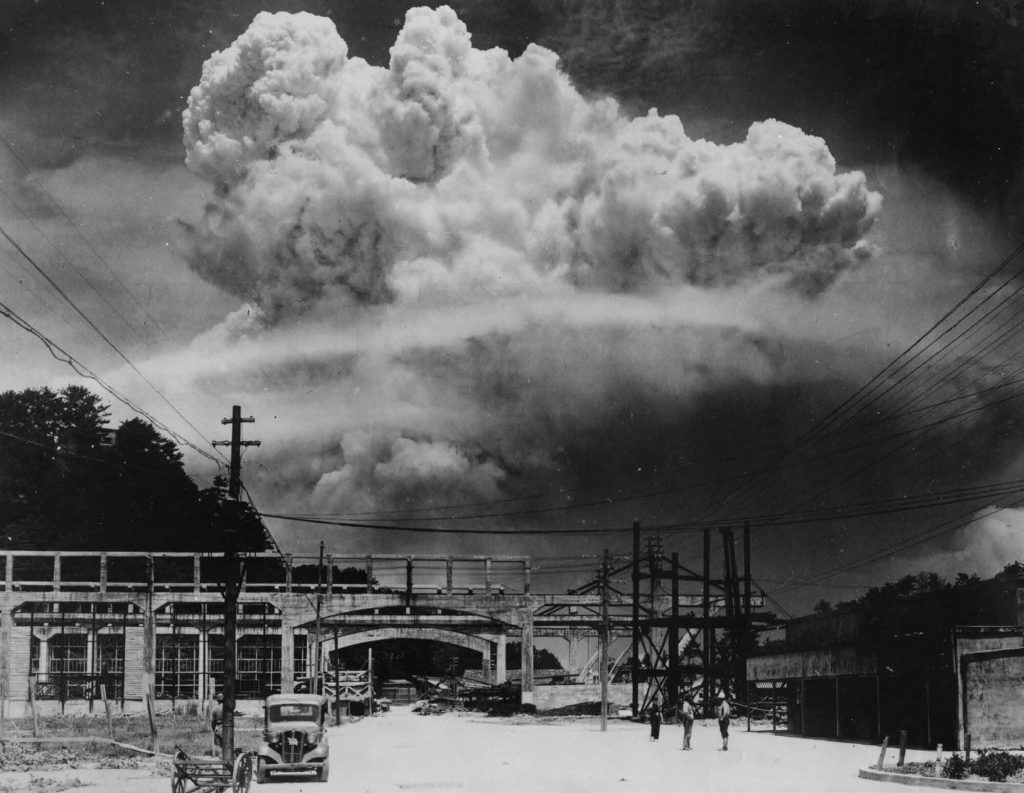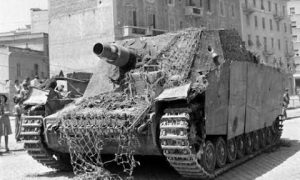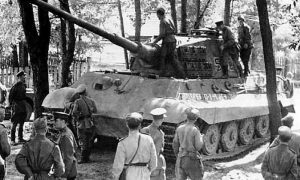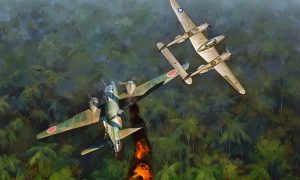Bombing of Hiroshima on August 6, 1945
Hiroshima during World War II
Hiroshima was located on a flat area, slightly above sea level at the mouth of the Ota River, on 6 islands connected by 81 bridges. The population of the city before the war was over 340 thousand people, which made Hiroshima the seventh largest city in Japan. The city was the headquarters of the Fifth Division and the Second Main Army of Field Marshal Shunroku Hata, who commanded the defense of all of Southern Japan. Hiroshima was an important supply base for the Japanese army.
In Hiroshima (as well as in Nagasaki), most of the buildings were one- and two-story wooden buildings with tiled roofs. Factories were located on the outskirts of the city. Outdated fire equipment and insufficient training of personnel created a high fire hazard even in peacetime.
The population of Hiroshima peaked at 380,000 during the course of the war, but before the bombing, the population gradually decreased due to systematic evacuations ordered by the Japanese government. At the time of the attack, the population was about 245 thousand people.
Bombardment
The main target of the first American nuclear bombing was Hiroshima (Kokura and Nagasaki were spares). Although Truman’s order called for the atomic bombing to begin on August 3, clouds over the target prevented this until August 6.
On August 6 at 1:45 an American B-29 bomber under the command of the commander of the 509th mixed aviation regiment, Colonel Paul Tibbets, carrying the atomic bomb “Malysh”, took off from the island of Tinian, which was 2500 km away (approximately 6 hours of flight)from Hiroshima. Tibbets’ aircraft (” Enola Gay “) flew in a formation that included six other aircraft: a spare aircraft (“Top Secret”), two controllers and three reconnaissance aircraft (“Jebit III”, “Full House” and “Street Flash”). Reconnaissance aircraft commanders sent to Nagasaki and Kokura reported significant cloud cover over these cities. The pilot of the third reconnaissance aircraft, Major Iserli, found out that the sky over Hiroshima was clear and sent a signal “Bomb the first target”.
Around 7 a.m., a network of Japanese early warning radars detected the approach of several American aircraft heading towards southern Japan. An air raid alert was issued and radio broadcasts stopped in many cities, including Hiroshima. At about 08:00 a radar operator in Hiroshima determined that the number of incoming aircraft was very small—perhaps no more than three—and the air raid alert was called off. In order to save fuel and aircraft, the Japanese did not intercept small groups of American bombers. The standard message was broadcast over the radio that it would be wise to go to the bomb shelters if the B-29s were actually seen, and that it was not a raid that was expected, but just some kind of reconnaissance.
At about 8 o’clock in the morning local time, the B-29, being at an altitude of over 9 km, dropped an atomic bomb on the center of Hiroshima. After leaving the bomb bay, she flew over the city for approximately 45 seconds; at the 43rd second of the fall, the clock and barometric triggers fired synchronously, activating the fuse. The bomb exploded at an altitude of about 400-600 meters (according to more accurate estimates – 576 meters above the ground). Many stopped clocks at the time of the explosion accurately recorded this moment in time – 08 hours 15 minutes.
The first public announcement of the event came from Washington, DC, sixteen hours after the atomic attack on the Japanese city.

Effect of Explosion
Those closest to the epicenter of the explosion died instantly, their bodies turned to coal. Birds flying past burned up in the air, and dry combustible materials (for example, paper) ignited at a distance of up to 2 km from the epicenter. Light radiation burned the dark pattern of clothes into the skin and left the silhouettes of human bodies on the walls. People outside the houses described a blinding flash of light, which simultaneously came with a wave of suffocating heat. The blast wave for everyone who was near the epicenter followed almost immediately, often knocking down. Those in the buildings tended to avoid the light from the explosion, but not the blast—glass shards hit most rooms, and all but the strongest buildings collapsed. One teenager was blasted out of his house across the street as the house collapsed behind him. Within a few minutes, 90% of people who were at a distance of 800 meters or less from the epicenter died.
The blast wave shattered glass at a distance of up to 19 km. For those in the buildings, the typical first reaction was the thought of a direct hit from an aerial bomb.
Numerous small fires that simultaneously broke out in the city soon merged into one large fire tornado, which created a strong wind (speed of 50–60 km/h) directed towards the epicenter. The fiery tornado captured over 11 km² of the city, killing everyone who did not have time to get out during the first few minutes after the explosion.
According to the memoirs of Akiko Takakura, one of the few survivors who were at the time of the explosion at a distance of 300 m from the epicenter:
Three colors characterize for me the day the atomic bomb was dropped on Hiroshima: black, red and brown. Black because the explosion cut off the sunlight and plunged the world into darkness. Red was the color of blood flowing from wounded and broken people. It was also the color of the fires that burned everything in the city. Brown was the color of burnt, peeling skin exposed to light from the explosion.
A few days after the explosion, among the survivors, doctors began to notice the first symptoms of exposure. Soon, the death toll among survivors began to rise again as patients who appeared to be on the mend began to suffer from this strange new disease. Deaths from acute radiation sickness peaked 3–4 weeks after the explosion and began to decline only after 7–8 weeks. Japanese doctors considered vomiting and diarrhea characteristic of acute radiation sickness to be symptoms of dysentery]. The increased risk of malignant tumors, chronic radiation sickness, and other delayed effects of radiation haunted the survivors for the rest of their lives, as did the psychological shock of the experience during the explosion.
The first person in the world whose cause of death was officially listed as a disease caused by the consequences of a nuclear explosion (radiation poisoning) was the actress Midori Naka, who survived the Hiroshima explosion, but died on August 24, 1945. Journalist Robert Jung believes that it was Midori’s disease and its popularity among ordinary people that allowed people to learn the truth about the emerging “new disease”. Until the death of Midori, no one attached importance to the mysterious deaths of people who survived the moment of the explosion and died under circumstances unknown to science at that time. Jung believes that Midori’s death was the impetus for the acceleration of research in the field of nuclear medicine, which soon managed to save the lives of many people who suffered from radiation exposure.
Japanese awareness of the consequences of the attack
The Tokyo operator of the Japan Broadcasting Corporation noticed that the Hiroshima station stopped broadcasting the signal. He tried to re-establish the broadcast using a different phone line, but that also failed. About twenty minutes later, the Tokyo Rail Telegraph Control Center realized that the main telegraph line had stopped working just north of Hiroshima. From a halt 16 km from Hiroshima, unofficial and confusing reports of a terrible explosion came. All these messages were forwarded to the headquarters of the Japanese General Staff.
Military bases repeatedly tried to call the Hiroshima Command and Control Center. The complete silence from there baffled the General Staff, since they knew that there was no major enemy raid in Hiroshima and there was no significant explosives depot. The young staff officer was instructed to immediately fly to Hiroshima, land, assess the damage, and return to Tokyo with reliable information. The headquarters basically believed that nothing serious happened there, and the reports were explained by rumors.
Headquarters officer went to the airport, from where he flew to the southwest. After a three-hour flight, while still 160 km from Hiroshima, he and his pilot noticed a large cloud of smoke from a bomb. It was a bright day and the ruins of Hiroshima were burning. Their plane soon reached the city around which they circled in disbelief. The city turned into a zone of continuous destruction, still burning and covered in a thick cloud of smoke. They landed south of the city, and the officer, having reported what had happened in Tokyo, immediately began to take rescue measures.
The first real Japanese understanding of what really caused the disaster came from a public announcement from Washington, DC, sixteen hours after the atomic attack on Hiroshima.
Loss and destruction

The number of deaths from the direct impact of the explosion ranged from 70 to 80 thousand people. By the end of 1945, due to the action of radioactive contamination and other delayed effects of the explosion, the total number of deaths was from 90 to 166 thousand people. After 5 years, the total number of deaths, taking into account deaths from cancer and other long-term effects of the explosion, could reach or even exceed 200 thousand people.
According to official Japanese data as of March 31, 2013, there were 201,779 “hibakusha” alive – people affected by the effects of the atomic bombings of Hiroshima and Nagasaki. This number includes children born to women exposed to radiation from the explosions (predominantly living in Japan at the time of counting). Of these, 1%, according to the Japanese government, had serious oncological diseases caused by radiation exposure after the bombing. The number of deaths as of August 31, 2013 is about 450 thousand: 286,818 in Hiroshima and 162,083 in Nagasaki.
Nuclear pollution
The concept of “radioactive contamination” did not yet exist in those years, and therefore this issue was not even raised then. People continued to live and rebuild the destroyed buildings in the same place where they were before. Even the high mortality of the population in subsequent years, as well as illnesses and genetic abnormalities in children born after the bombings, were not initially associated with exposure to radiation. The evacuation of the population from the contaminated areas was not carried out, since at that time no one knew about the very presence of radioactive contamination.
It is rather difficult to give an accurate assessment of the degree of this contamination due to lack of information, however, since technically the first atomic bombs were relatively low-yield and imperfect (the bomb “Kid”, for example, contained 64 kg of uranium, of which only approximately 700 g reacted division), the level of pollution of the area could not be significant, although it posed a serious danger to the population. For comparison: at the time of the accident at the Chernobyl nuclear power plant, the reactor core contained several tons of fission products and transuranium elements, various radioactive isotopes accumulated during the operation of the reactor.
Comparative preservation of some buildings
Some of the reinforced concrete buildings in Hiroshima were very stable (due to the risk of earthquakes) and their frame did not collapse, despite being quite close to the center of destruction in the city (the epicenter of the explosion). Thus, the brick building of the Hiroshima Chamber of Industry (now commonly known as the “Genbaku Dome”, or “Atomic Dome”), designed and built by the Czech architect Jan Letzel, which was located just 160 meters from the epicenter of the explosion (with a bomb explosion height of 600 m above surface). The ruins became the most famous exhibit of the Hiroshima atomic explosion and were designated a UNESCO World Heritage Site in 1996, despite objections raised by US governments.and China.
Events 6-9 August
On August 6, after receiving news of the successful execution of the atomic bombing of Hiroshima, US President Truman stated:
We are now ready to destroy, even faster and more completely than before, all Japanese land-based production facilities in any city. We will destroy their docks, factories and their communications. Let there be no misunderstanding – we will completely destroy Japan’s ability to wage war.
It was to prevent the destruction of Japan that an ultimatum was issued on July 26 in Potsdam. Their leadership immediately rejected his terms. If they do not accept our terms now, let them expect a rain of destruction from the air, the likes of which have not yet been seen on this planet.
After receiving the news of the atomic bombing of Hiroshima, the Japanese government met for discussion. Beginning in June, the emperor advocated peace talks, but the minister of defense, as well as the leadership of the army and navy, felt that Japan should wait to see if attempts at peace negotiations through the Soviet Union would yield anything better than unconditional surrender. The military leadership also believed that if they could hold out until the invasion of the Japanese islands began, it would be possible to inflict such losses on the Allied forces that Japan could end the war without unconditional surrender.
On August 9, the USSR declared war on Japan and Soviet troops began the Manchurian operation. Hopes for the mediation of the USSR in the negotiations collapsed. The top leadership of the Japanese army began preparations for declaring martial law in order to prevent any attempt at peace negotiations.




















